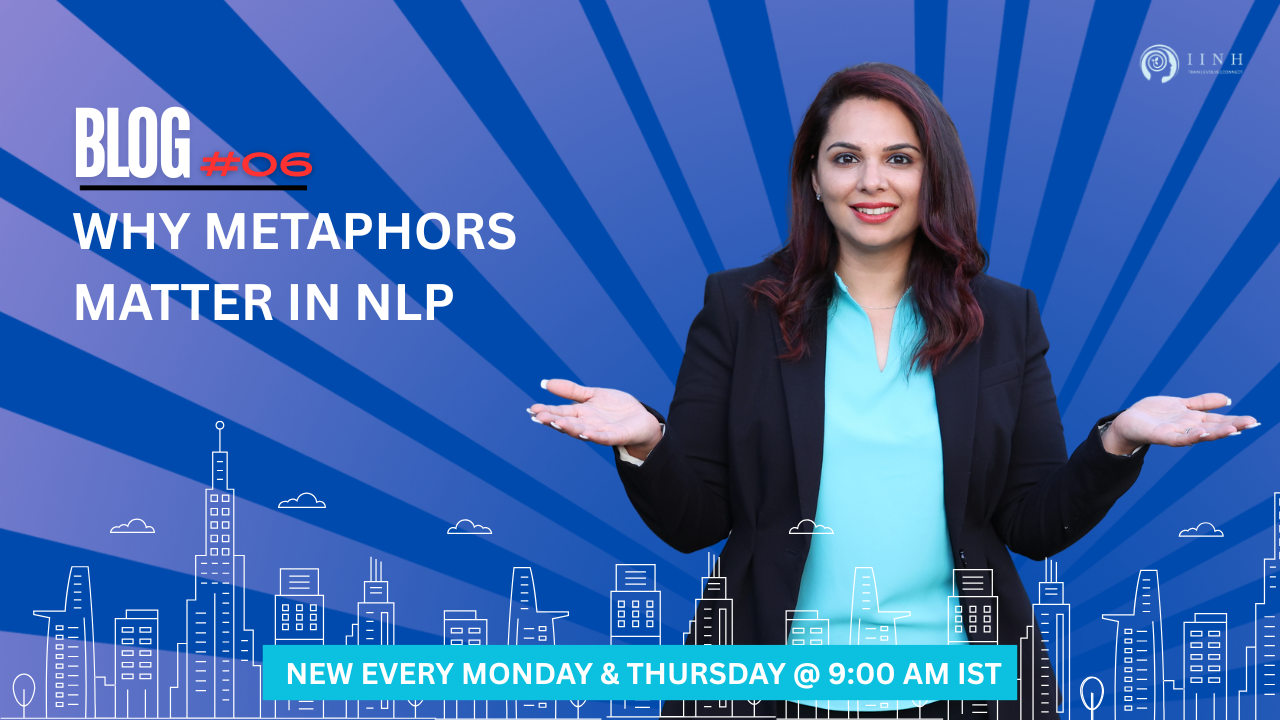Why Metaphors Matter in NLP
Oct 17, 2025
Why Metaphors Matter in NLP: Unlocking the Power of Unconscious Change
Have you ever struggled to explain a complex idea, only to be met with confusion or resistance? In Neuro-Linguistic Programming (NLP), metaphors are not just poetic language—they are powerful tools designed to connect directly with the unconscious mind, the real driver behind our learning, emotions, and behaviour.
One major reason metaphors are so effective in NLP is that they bypass the critical faculty—the conscious mind’s natural filter that often doubts or rejects new ideas. By slipping past this mental gatekeeper, metaphors allow new insights to be absorbed more deeply, facilitating real and lasting change.
Whether you’re a coach, therapist, educator, or business leader, mastering the use of NLP metaphors can deepen rapport, shift limiting beliefs, and inspire transformation quickly and effectively.
What Are NLP Metaphors?
In NLP, metaphors are symbolic stories or comparisons used to:
Help clients gain fresh insights
Influence positive behavioral change
Access unconscious resources
Simplify complex ideas for easier understanding
There are three main types of metaphors used in NLP:
1. Shallow Metaphors
These are simple comparisons or similes that make an idea relatable and easy to grasp.
Example: “Your mind is like a garden—you need to tend it carefully.”
2. Deep Metaphors
Layered stories with emotional and symbolic depth. Often used in trance states, deep metaphors communicate directly with the unconscious mind on multiple levels.
Example: A story about a traveller overcoming obstacles symbolizes personal growth.
3. Embedded Metaphors
Multiple metaphors linked together in a way that can confuse the conscious mind, opening the door for suggestions to be accepted by the unconscious.
Example: Like intertwined stories that weave a hidden message.
How Do Metaphors Work in NLP?
Using metaphors effectively in NLP requires a thoughtful process:
- Identify the Problem
Understand the client’s current challenge or limiting belief. - Map the Strategy
Discover the internal thought patterns or triggers maintaining the issue. - Define the Desired Outcome
Clarify the goal or transformation the client wants to achieve. - Set Anchors
Create emotional or sensory cues tied to both the problem and solution. - Craft the Metaphor
Design a story with symbolic characters and a resolution that mirrors the client’s situation. - Use NLP Language Patterns
Incorporate ambiguity, pacing, and sensory-rich language to engage the unconscious mind. - Future Pace and Resolve
End with a positive outcome and reinforce new ways of thinking or behaving.
Why Use Metaphors in Everyday Life and Business?
Metaphors are incredibly versatile. You can use them beyond therapy or coaching:
- In Business: Simplify complex concepts for clients or teams.
Example: “Think of our strategy as the blueprint for building your success.” - In Education: Help students grasp difficult subjects.
Example: “Learning is like climbing a mountain—step by step, you get higher.” - In Daily Communication: Support loved ones through challenges.
Example: “Sometimes, pruning old branches helps the tree grow stronger.”
Even brief metaphors make your message clearer and more memorable, especially when introducing NLP concepts or handling objections.
Metaphors Bypass the Critical Faculty—Here’s Why That Matters
The conscious mind often acts as a filter, critically evaluating information and sometimes resisting change. Metaphors bypass this critical faculty, allowing suggestions to slip into the unconscious more smoothly. This means people are more open to new ideas and transformation without feeling pressured or defensive.
This unique ability makes metaphors an essential tool in NLP, hypnosis, coaching, and all forms of effective communication.
Final Thought: Use Metaphors to Transform Communication and Change
The real magic of metaphors lies in their ability to help us see familiar things in new ways. They connect us deeply to our unconscious resources, making change feel natural and effortless.
So next time you communicate—whether coaching a client, leading a team, or simply sharing an idea—ask yourself:
“What is this like?”
The answer could be the key to unlocking understanding, connection, and transformation.
Ready to Master NLP Metaphors and Communication?
Join our Certified NLP Practitioner Training to learn practical techniques for building rapport, influencing ethically, and facilitating profound change. Our hands-on courses will help you harness the power of metaphors and much more.
👉 Explore our NLP courses and get started today!
Ready to unlock your full potential? Book a free discovery call today and experience the transformation.
Book Your Free Discovery Call
#NLP #NeuroLinguisticProgramming #NLPMetaphors #MindsetCoach #UnconsciousChange #NLPTraining #PersonalDevelopment #EmotionalIntelligence #TransformationCoaching #NLPPractitioner #CommunicationSkills #StorytellingInCoaching #MindsetShift #NLPTechniques #LifeCoaching
